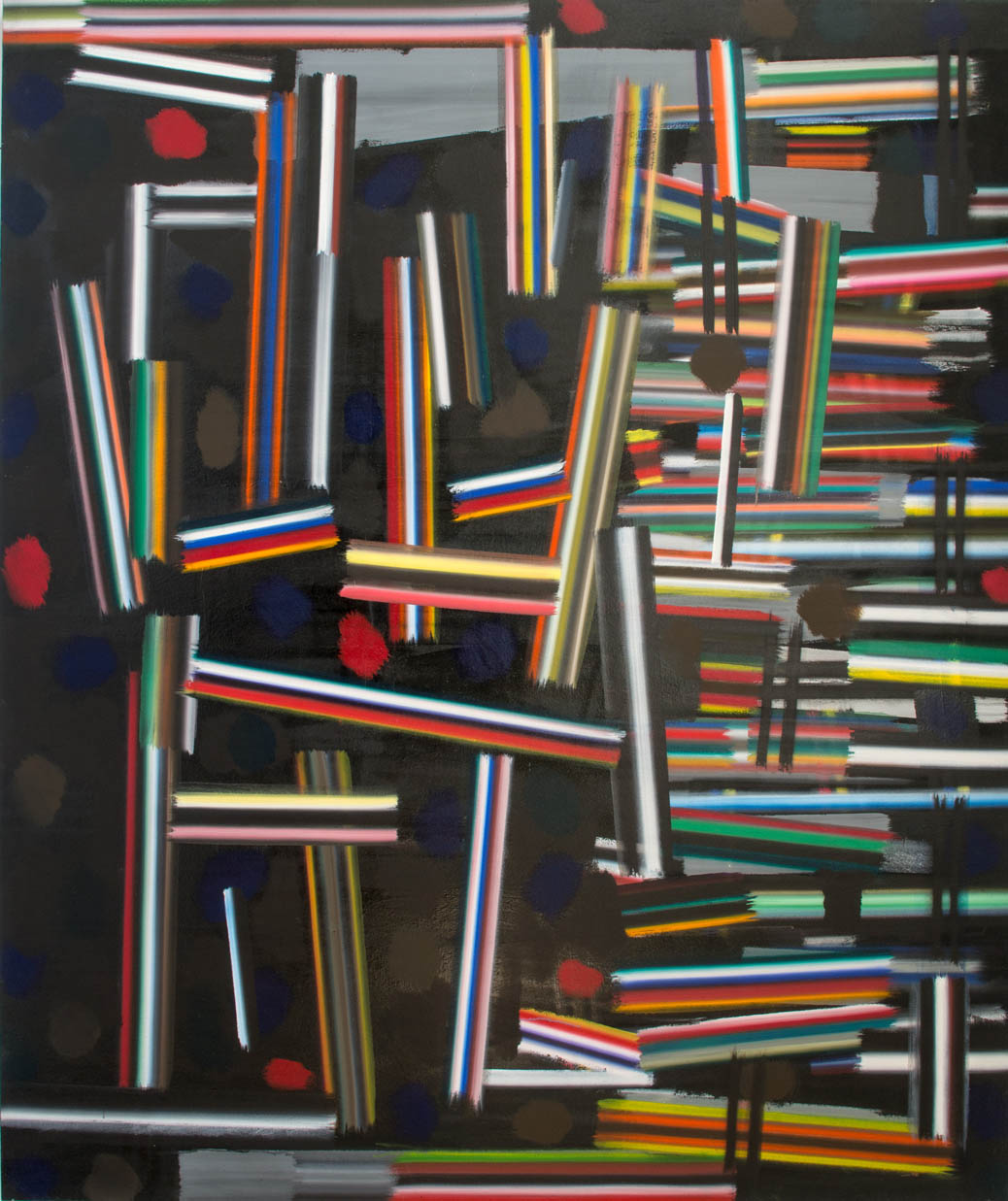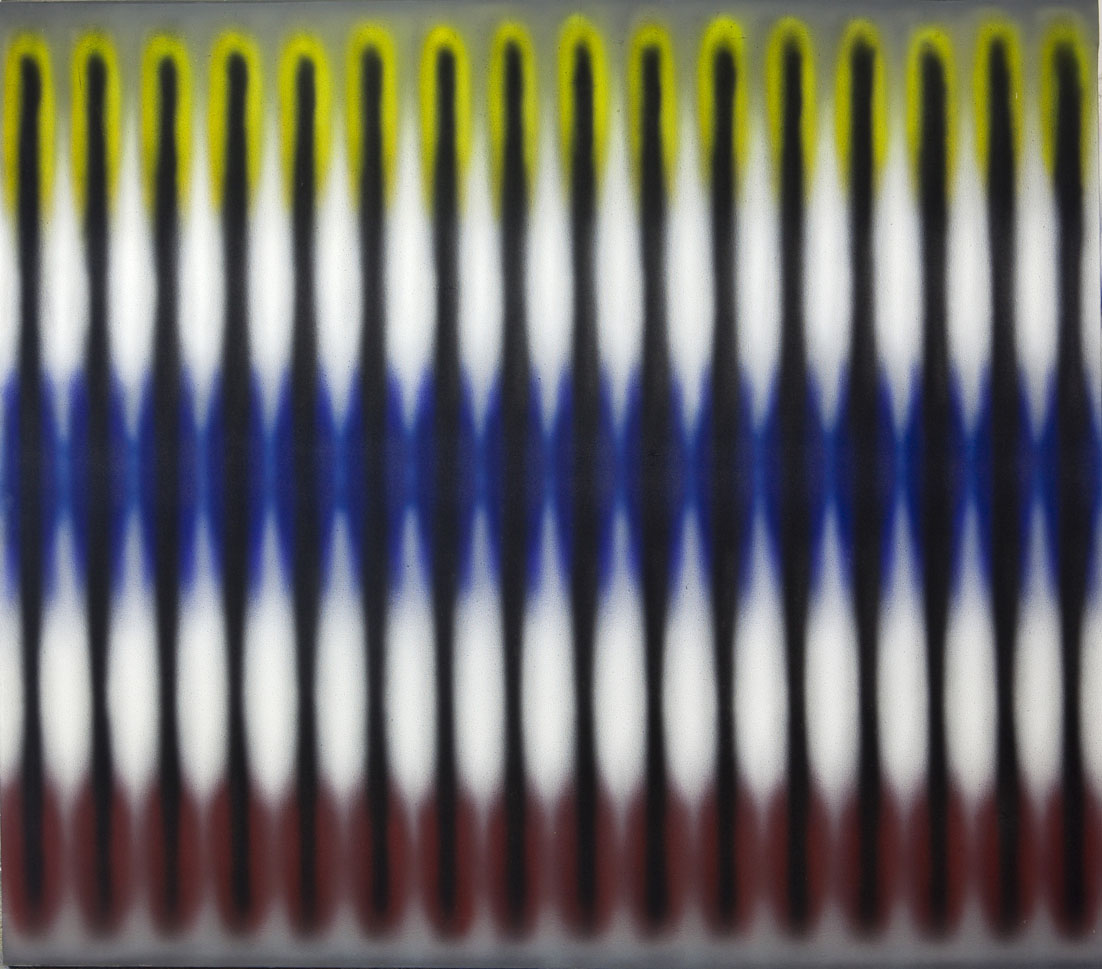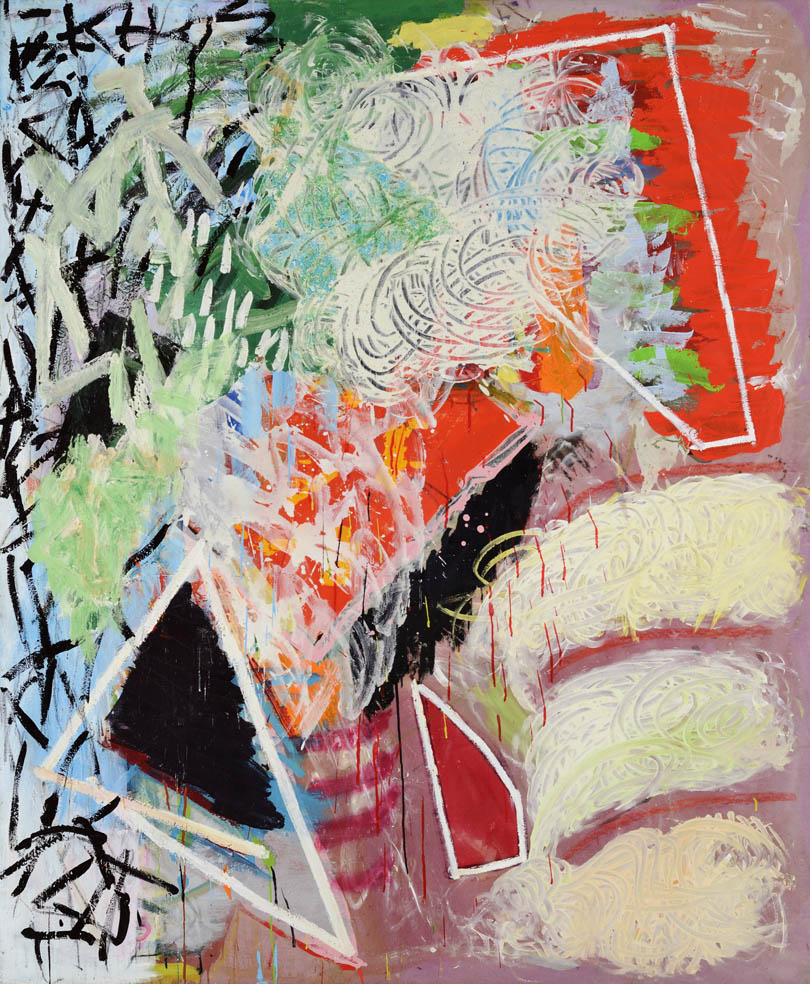New Possibilities: Abstract Paintings from the Seventies at the Piper Gallery
 This exhibition presents the work of artists whose work became less fashionable during the 1970s with the rise of conceptual and performance art. While these artists are still working today, most of the work on display is from this period. This is a very diverse exhibition: all of the artists have very individual styles. However, a common feature is an attention to craft, precision and formal values in painting.
This exhibition presents the work of artists whose work became less fashionable during the 1970s with the rise of conceptual and performance art. While these artists are still working today, most of the work on display is from this period. This is a very diverse exhibition: all of the artists have very individual styles. However, a common feature is an attention to craft, precision and formal values in painting.
The range of approaches is very clear when you compare the work of Tess Jaray and Frank Bowling. Tess’ Alhambra (1979) is deceptively simple at first glance, but closer examination draws the viewer in and reveals the surprising complexity hidden in what you believe to be predictable pattern. What at first appears to be a repetitive motif, on closer observation shows itself to have complex variation in colour, form and scale. Frank Bowling’s Rush Green (1977) seems to be more the sum of its parts. His deployment of paint by pouring it directly onto the canvas and utilising flow may seem haphazard, but on inspection the result is more mysterious. There appears to be an equivalence with art from the past – for example, Monet’s paintings of the garden at Giverney – sustained attention is rewarded.
 William Henderson and Barrie Cook both use a particular vocabulary to produce very different results. Henderson’s Funky, Blackand Catch Me (1978) creates a feeling of depth and jaggedness, with a definite sense of illusionistic space, reminding one of the microscopic world when magnified. Cook’s Blue, Red and Yellow Grid (1977) is an optical work which plays with the eyes. It is reminiscent of cathode ray tubes warming up in a old-fashioned television. There is a richness in the fact that the two paintings, both using repetitive linear forms, can produce such varied results.
William Henderson and Barrie Cook both use a particular vocabulary to produce very different results. Henderson’s Funky, Blackand Catch Me (1978) creates a feeling of depth and jaggedness, with a definite sense of illusionistic space, reminding one of the microscopic world when magnified. Cook’s Blue, Red and Yellow Grid (1977) is an optical work which plays with the eyes. It is reminiscent of cathode ray tubes warming up in a old-fashioned television. There is a richness in the fact that the two paintings, both using repetitive linear forms, can produce such varied results.
Other highlights of the exhibition include Gary Wragg’s Carnival (1977-79), which is driven by the process of drawing; Patricia Poullain’s Untitled (1973), which has a lightness and openness whose accessibility reminds one of a childhood telescope; and finally, Trevor Sutton’s measured, well proportioned That Swing.4.K (1979) combines electric blue and black, demarcated by a delicate green line. The piece is poised and balanced and seems to be very much of its time.
If you like your paintings to repay prolonged attention, then New Possibilities at the Piper Gallery is definitely worth a visit.
New Possibilities: Abstract Paintings from the Seventies is at The Piper Gallery, 18 Newman Street, W1T 1PE from 16 November to 21 December
Mary Tynan and Ian MacNaughton
(Pictures courtesy of the artists and The Piper Gallery)

